March and April saw the completion of a marathon planting exercise by the Scottish Plant Recovery team to give a helping hand to two threatened native tree species – wych elm (Ulmus glabra) and wild apple (Malus sylvestris), also known as crab apple. The elm is severely affected by a fungal disease – Dutch elm disease – and wild apples are increasingly crossbreeding with domesticated apples, changing the genetic makeup of the species in wild populations.
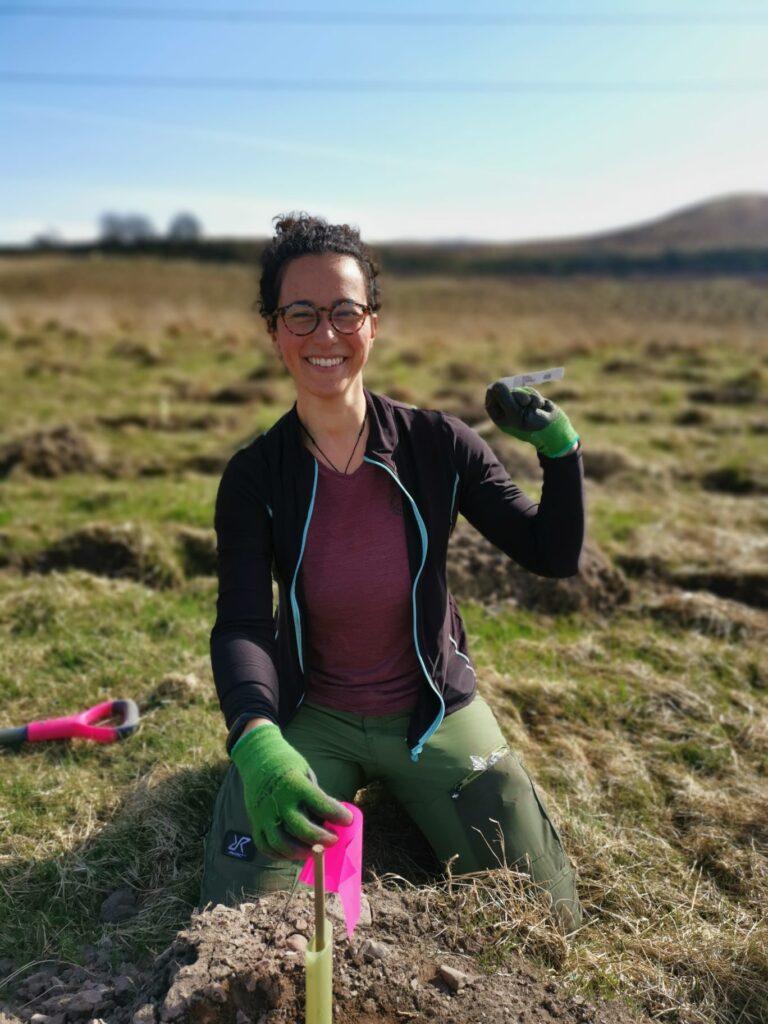
To assist the recovery of both trees, targeted planting on land that provides the conditions needed and the potential for future natural colonisation has been the goal. Crucially, the browsing threat posed by deer needs to be considered. All sites we selected for planting have either been fenced against deer or the deer numbers have been culled to a low density compatible with tree regeneration.
Getting to the point of having plants ready to go in the ground has been the work of the last two years. Elms that show signs of being resilient to disease have been selectively crossbred to create seedlings with two parents that show promise. Potential apple ‘mother’ trees have been genetically tested to ensure that they do not have a genetic contribution from domesticated trees and seed has been collected solely from trees that are surrounded by other truly wild apples.
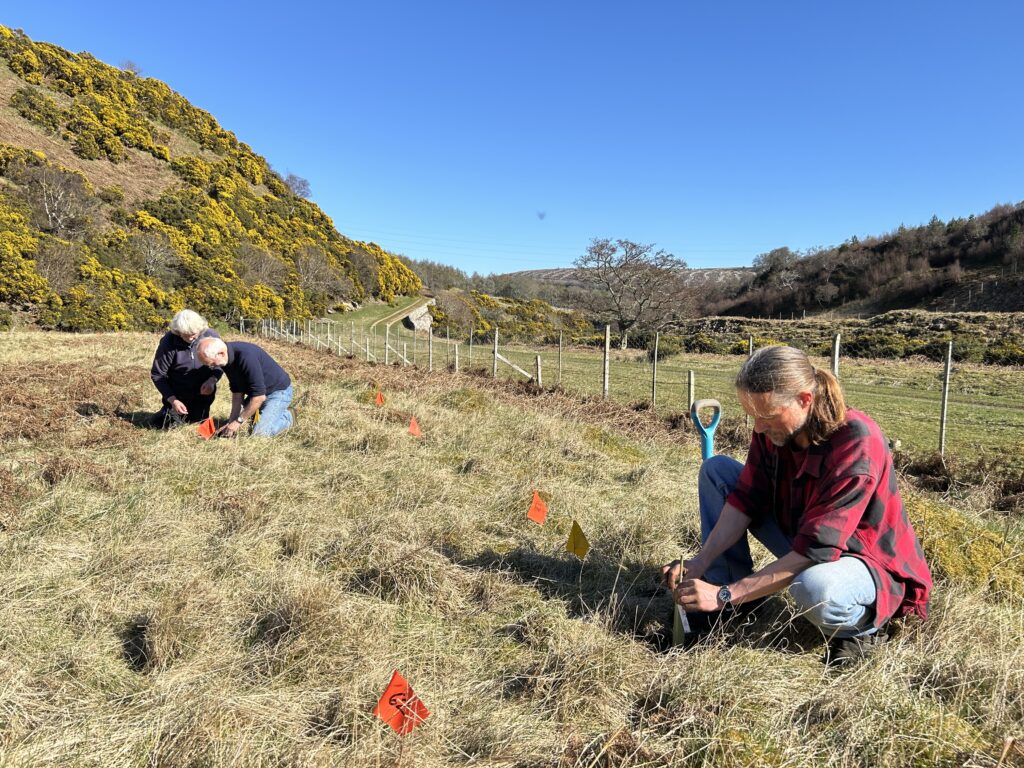
But this is just the start. To make a difference the newly produced saplings then need to be planted and this takes volunteers and landowners willing to provide land. So, this post is really a big thank you to everyone who has helped to make a difference for these threatened plants.
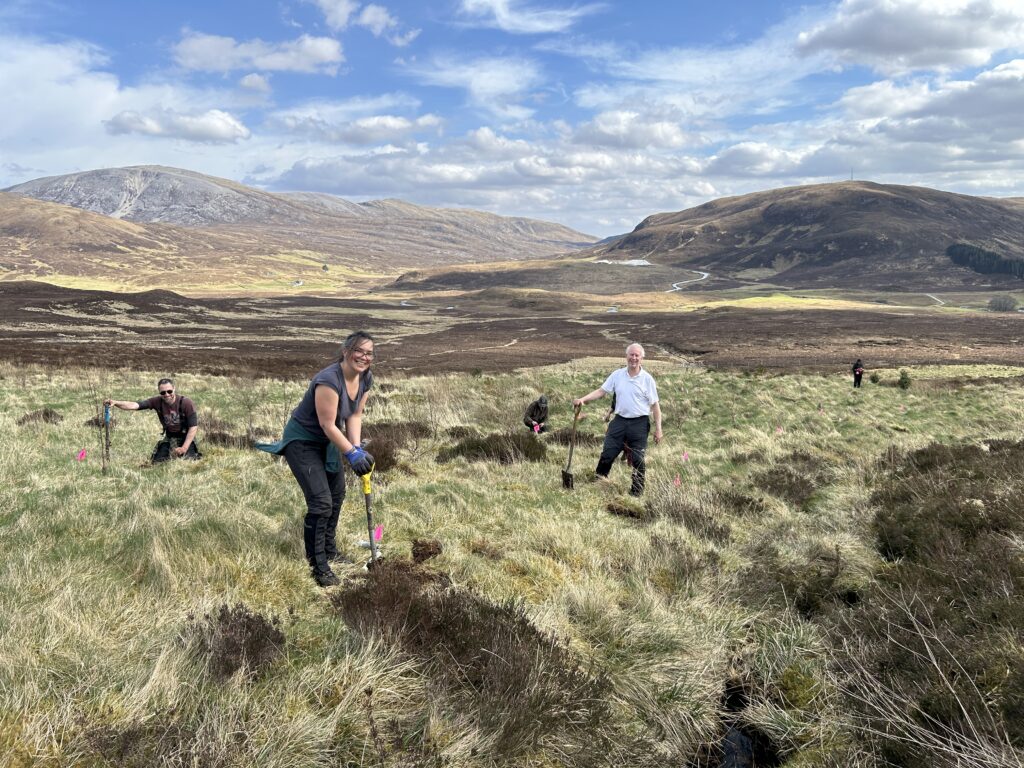
In forestry terms the numbers of trees will seem tiny, but for conservation planting that relies on volunteers and involves time-consuming, careful planting and logging of data on each tree this task has been a lot of work. The Scottish Plant Recovery team first checks that each plant is free of pest and disease, creates records for each sapling, prepares and packs the plants ready for transit to site, a massive task. Volunteer planters have all been lined up and the trips to 15 sites planned and organised. Then it’s time to roll up our sleeves and start digging holes to begin the plantings. The weather is not always kind, and it’s still early in the year, so a day out planting in the field can be exhausting work and something that needs repeated day after day to get through the list of sites all over Scotland.
Some of our amazing partners have planted trees themselves to help our small team, which was rather stretched to get this all done, despite the many wonderful volunteers. These sites were NTS owned Glencoe (200 elms), Kilchoan Estate (200 elms and 190 apples), Balmoral (190 apples), Ardtonish Estate (190 apples), Alladale Wilderness Reserve (90 apples), the University of Edinburgh owned site at Drumbrae (190 apples) and FLS sites planting 495 apples: Glen Gyle, Glentrool, and a site in Perthshire. A massive thanks to these sites for their help.
To really do justice to the effort involved we thought it would be good to show what has been achieved over the past couple of months. The map illustrates the geographic span of our planting sites. However, the headline statistics for 2025 (including some 196 elms planted in 2024) are: 2,220 elms planted across 15 sites, and 2,340 apples planted across 15 sites. Then, this month, three more apple sites are being planted by FLS, and one final apple site in autumn by NTS at Ben Lomond, making a total of 19 sites for apples and 2,925 planted saplings. Many the sites have had both elms and apples planted as these two tree species have similar requirements.
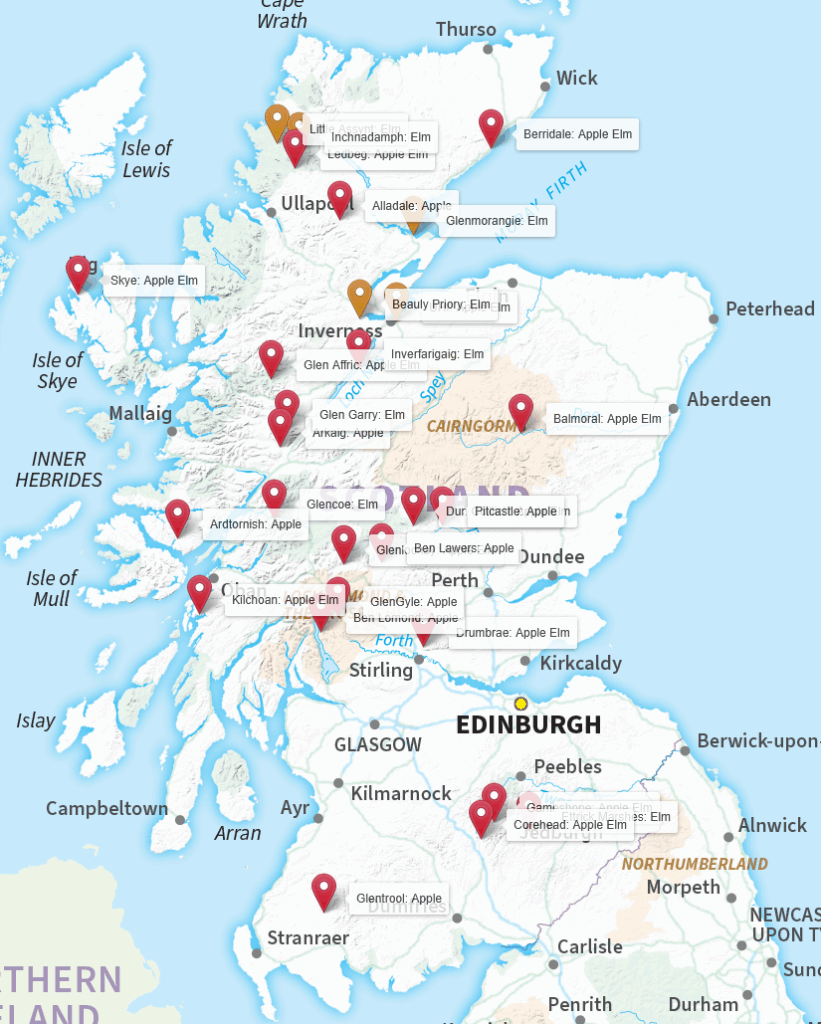
We would like to express our immense gratitude to all our partners across Scotland for being so generous with their time, advise, and lending their land and making us so positive about the recovery of these species. People are needed to create partnerships and make things happen.
In chronological order for 2025 plantings, please meet:
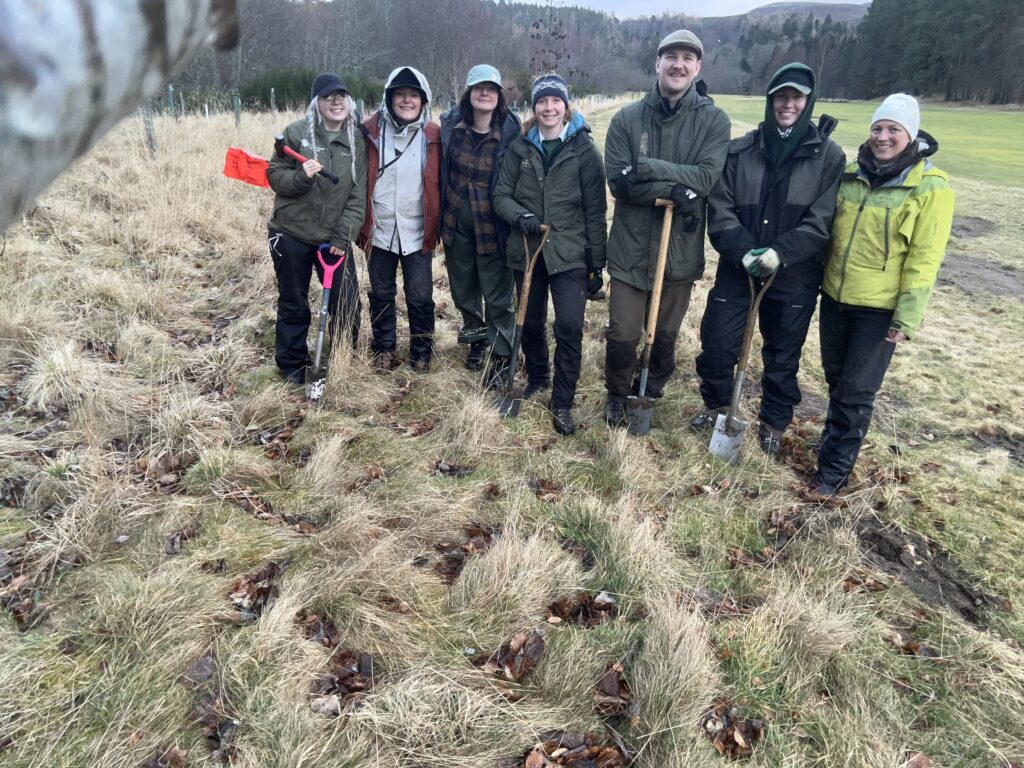
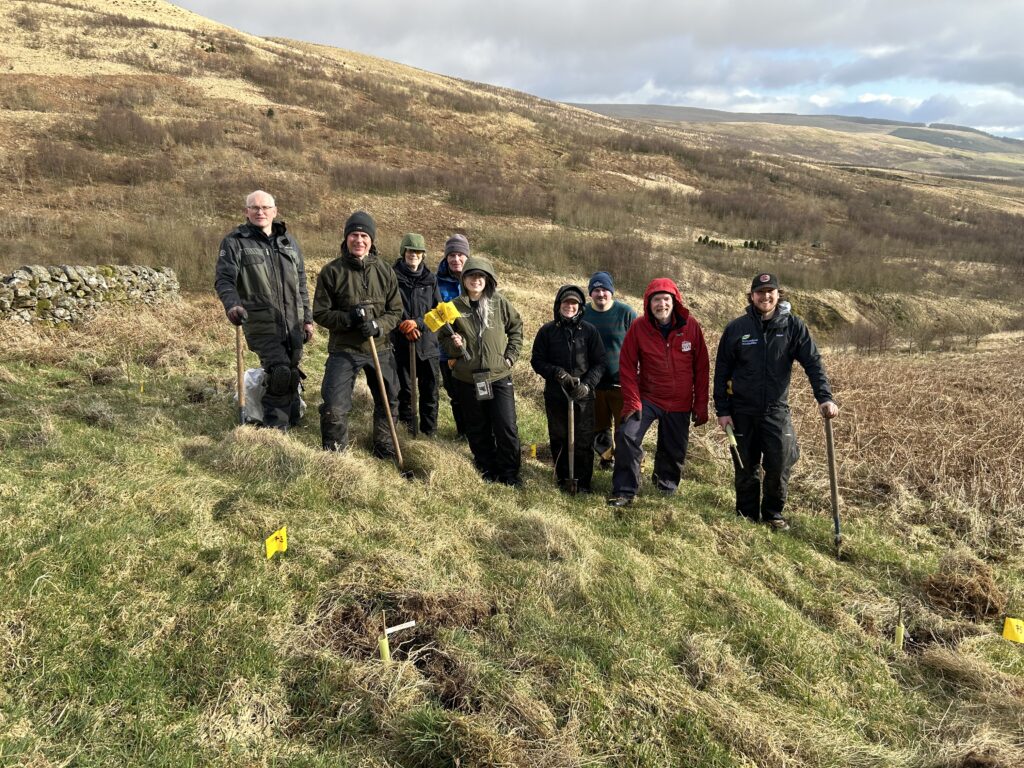

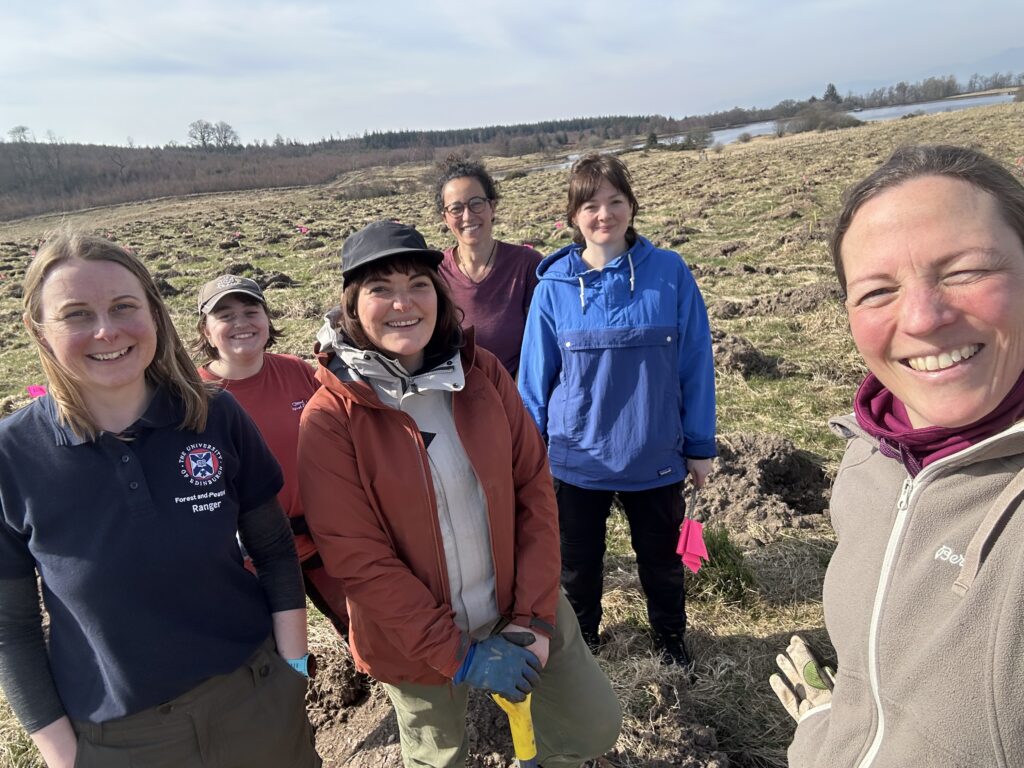
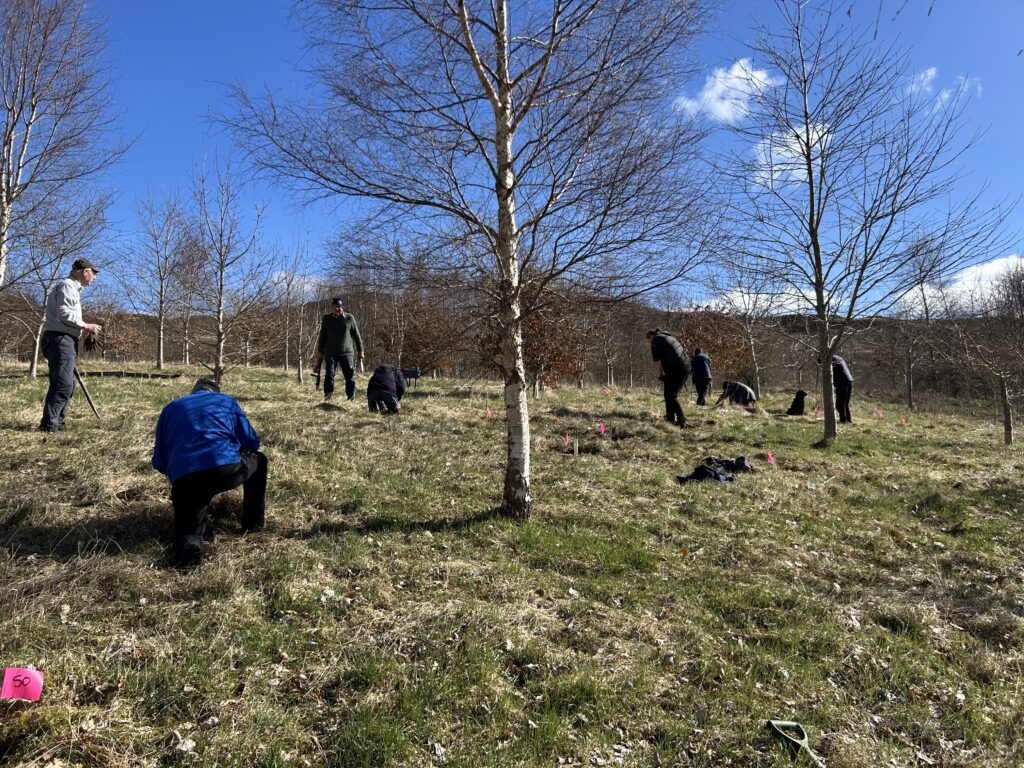
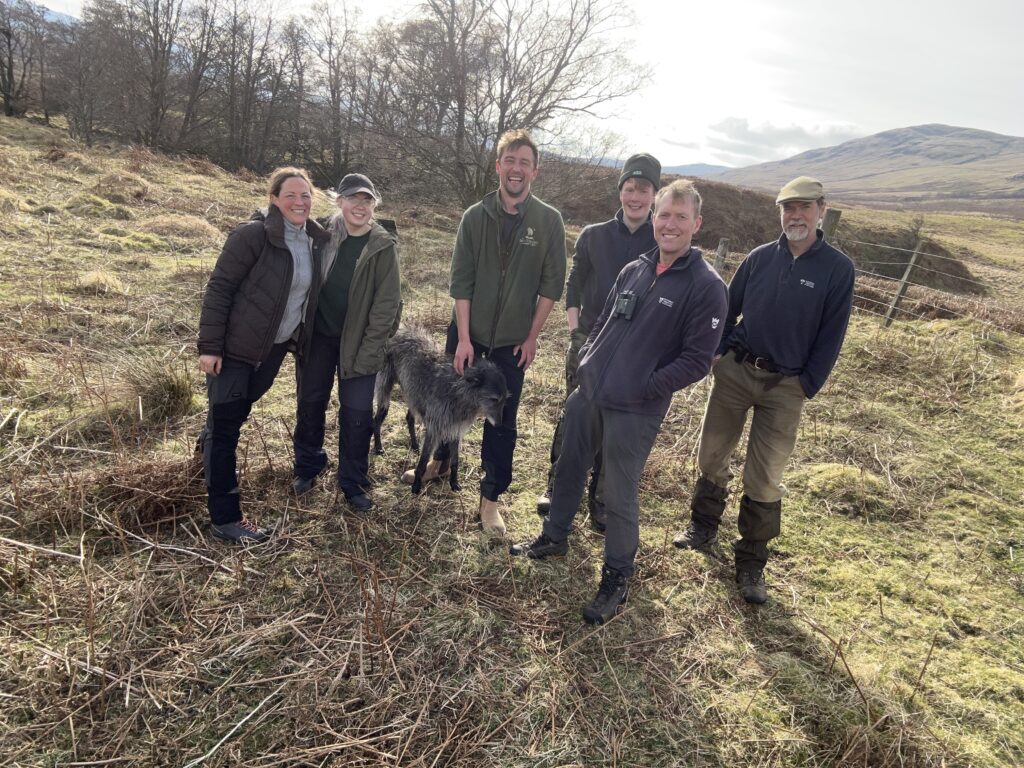
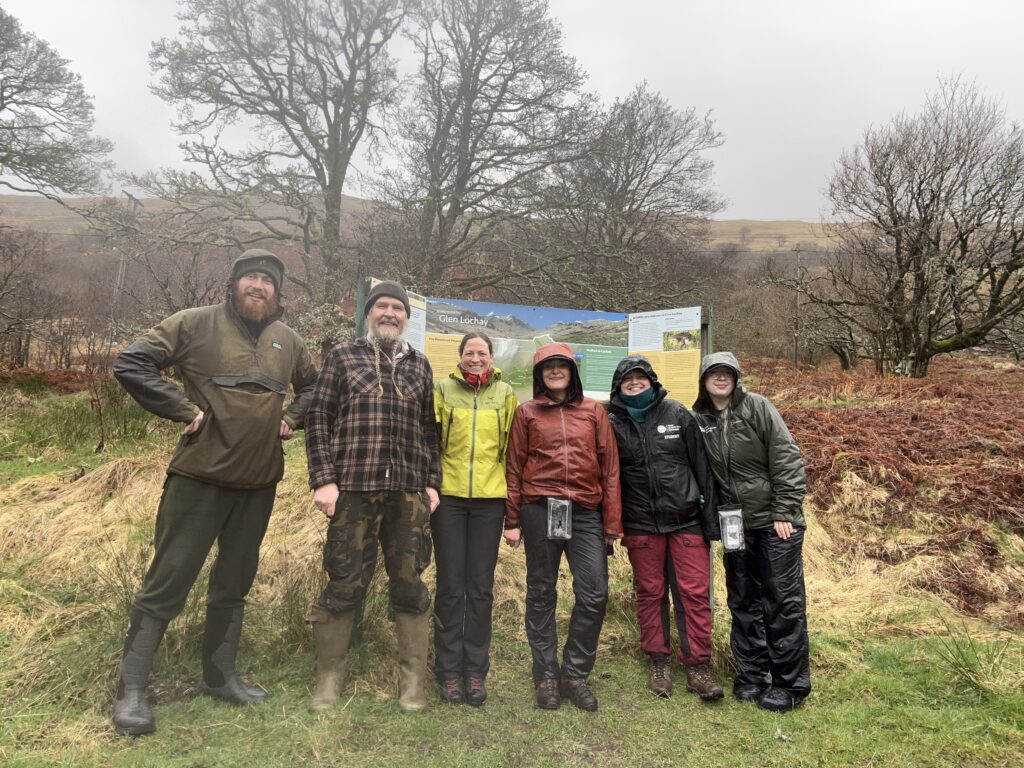
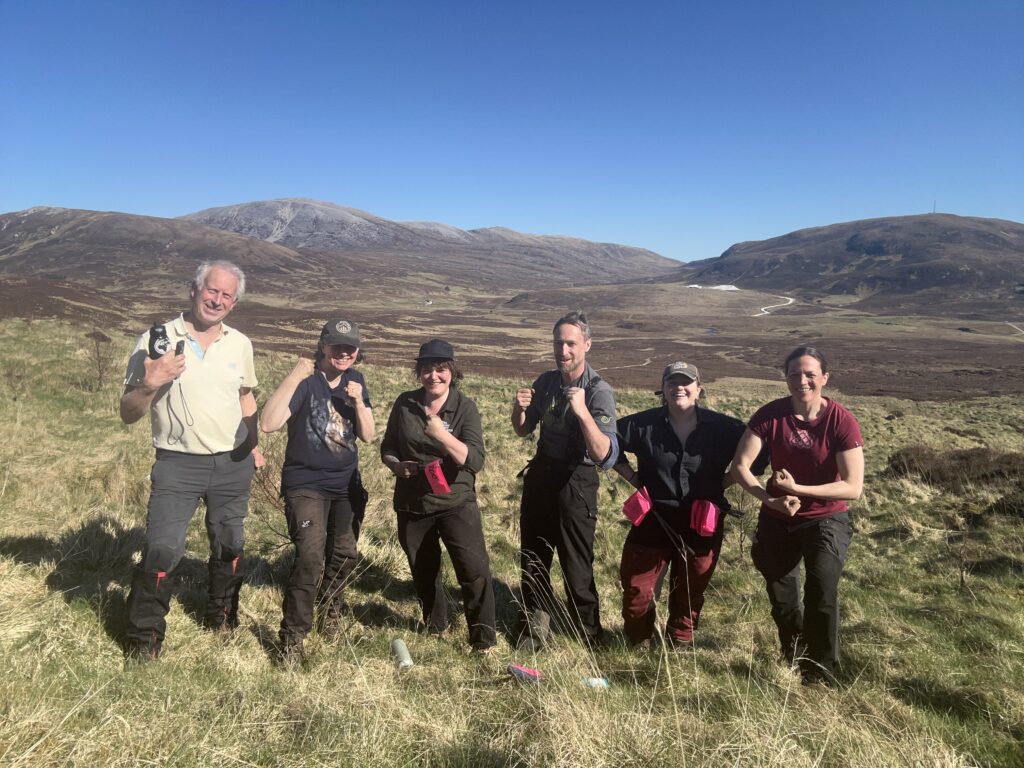

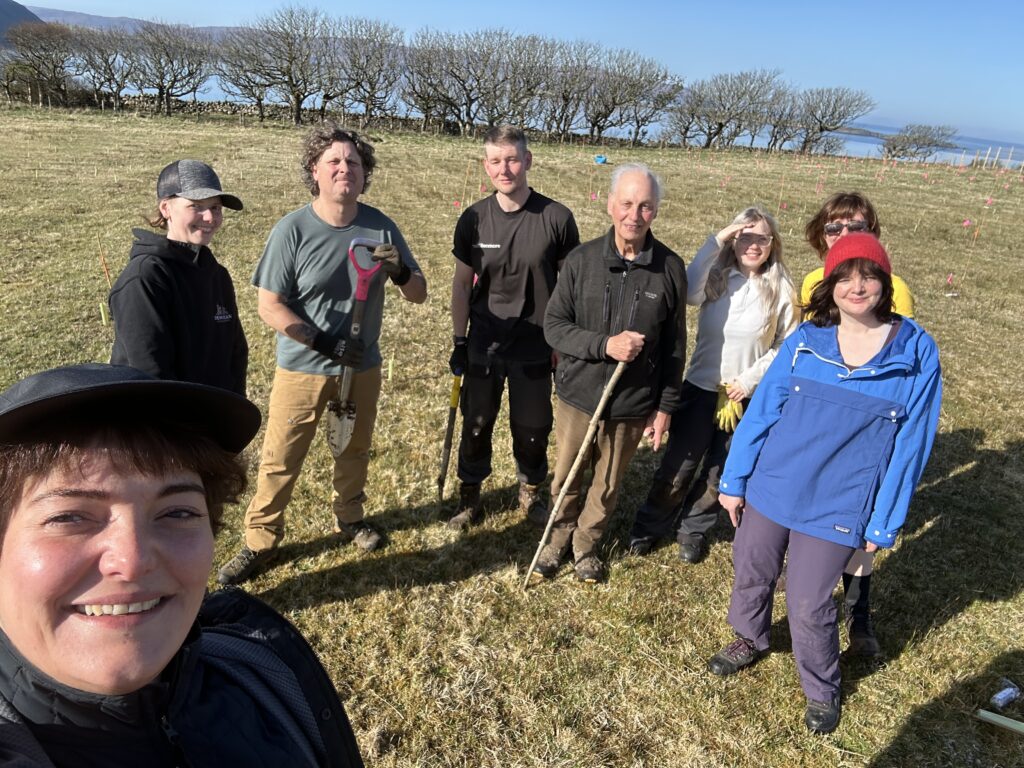
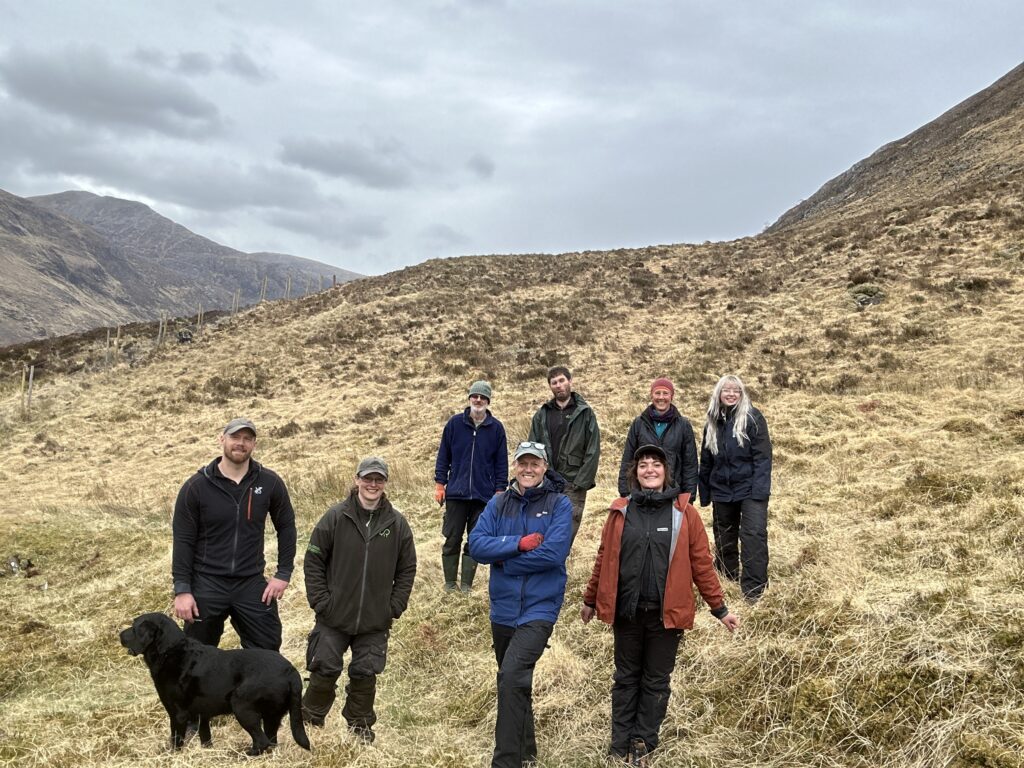
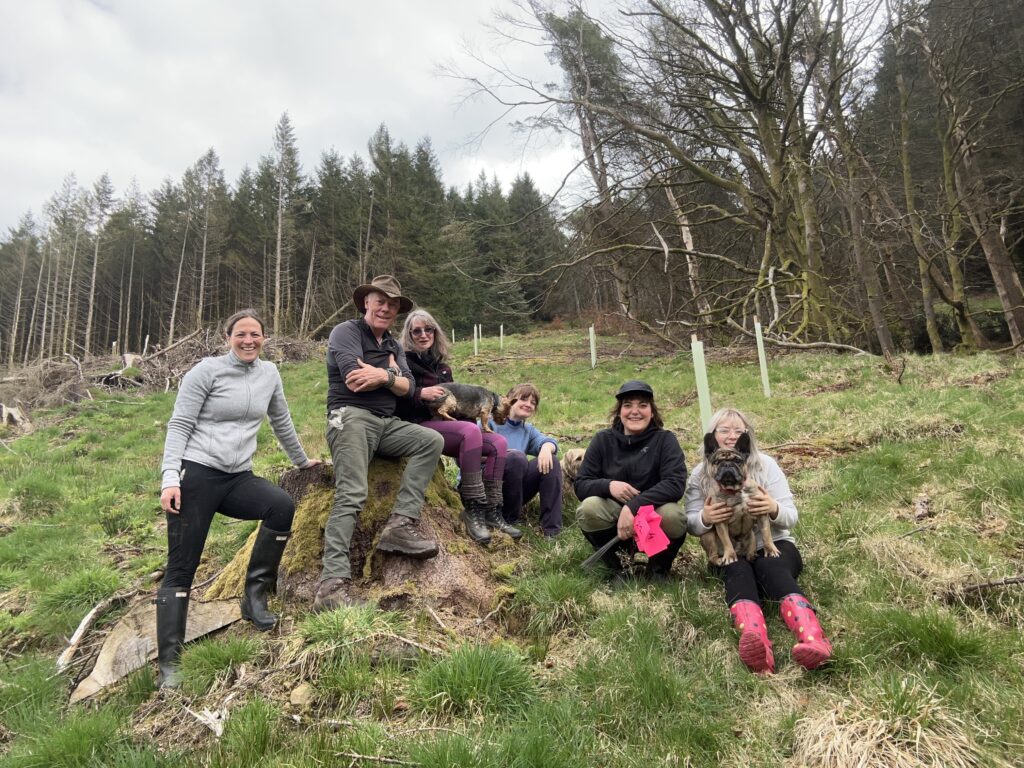
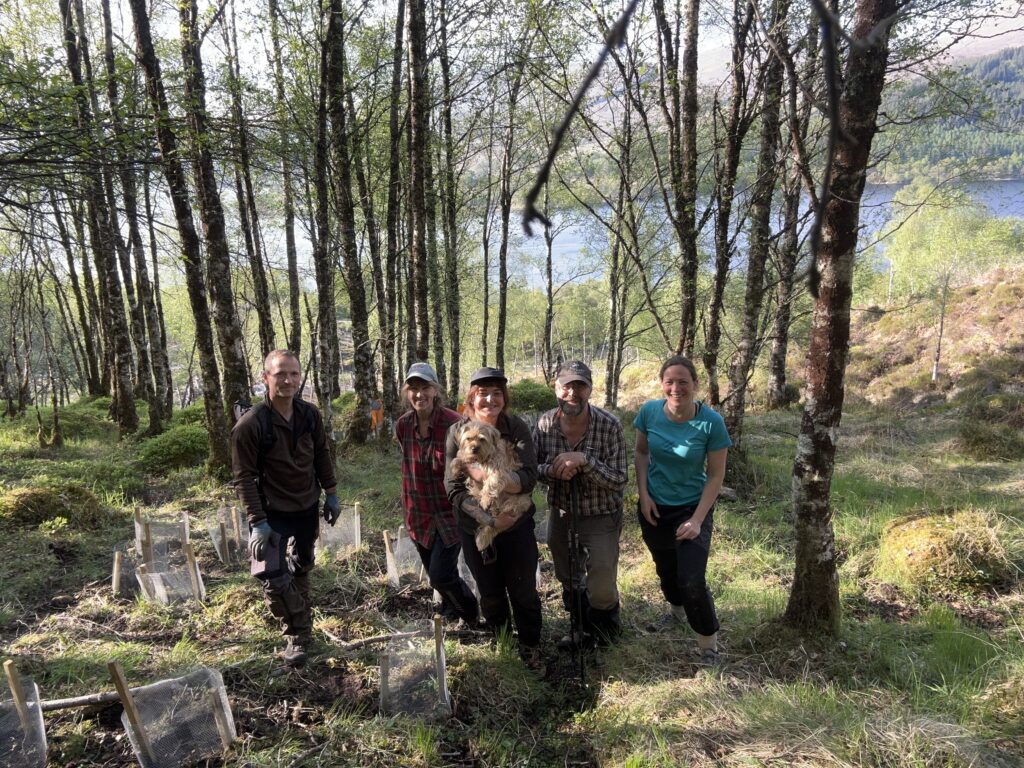
Also, five sites (marked in orange on the map) – Little Assynt Tree Nursery (1 elm), Beauly Priory (1 elm), Inchnadamph (9 elms), UHI campus (5 elms, 5 apples) and Glenmorangie distillery (10 elms) – had a few trees as ‘special’ plantings. Further elms have been sent to key partners: John Innes Centre will be testing 30 elms for disease resilience by artificial inoculation with Dutch elm disease and ten of our elms will be added to the largest UK collection of elm species in a private arboretum in Lincolnshire.
According to the Met Office, April was the the sunniest and warmest on record and many regions experienced low rainfall in comparison with what would be expected. Unfortunately, the dry weather continued into May, so we must keep our fingers crossed for rain and return to monitor the progress of the trees. Hopefully, we have initiated a natural recovery at many large sites across Scotland. If things go to plan the landscape will begin to be transformed and many plants and animals will benefit from the development of new native forest containing elms and wild apples.


- X @TheBotanics
- X @nature_scot
- X and Facebook @ScotGovNetZero
- Facebook @NatureScot
- #NatureRestorationFund
